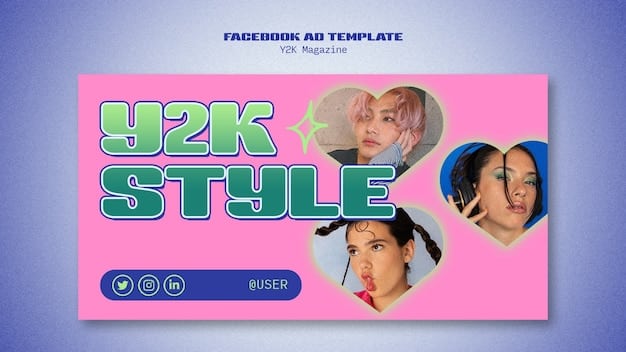K-Pop Idol Endorsement Deals: Which Brands Pay the Most?

K-Pop idol endorsement deals are highly lucrative partnerships where major brands pay top K-Pop stars, often exceeding $500,000, to promote their products in influential US marketing campaigns, boosting brand visibility and sales.
The world of K-Pop is synonymous with vibrant performances, catchy tunes, and, increasingly, high-stakes endorsement deals. Brands are clamoring to partner with these influential stars, particularly for campaigns targeting the lucrative US market. But which brands are willing to shell out over $500,000 for K-Pop idol endorsement deals, and what makes these partnerships so valuable?
K-Pop’s Global Influence on Brand Marketing
K-Pop has transcended its South Korean origins to become a global cultural phenomenon. This explosive growth has made K-Pop idols highly sought-after ambassadors for brands aiming to connect with a young, diverse, and digitally engaged audience, especially in the United States. Their influence stretches far beyond music, permeating fashion, beauty, and lifestyle trends.
The Power of Fandom
At the heart of K-Pop’s success lies the intense loyalty of its fandoms. These dedicated fans often go beyond simply enjoying the music; they actively participate in promoting their favorite idols, driving social media trends, and, crucially, purchasing products endorsed by them. This direct link between idol and consumer is what makes K-Pop endorsements so powerful.
US Market Potential
The US market represents a significant opportunity for both K-Pop artists and the brands that partner with them. With a large and diverse population, a mature consumer market, and a strong presence on social media, the US offers unparalleled reach and potential for growth. Brands recognize that K-Pop endorsements can be a highly effective way to penetrate this market.

The strategic appeal for brands investing heavily in K-Pop endorsements is rooted in the measurable impact on brand awareness, sales, and overall market penetration. The US campaigns, in particular, reflect a sophisticated marketing strategy to gain significant visibility and tap into the dedicated K-Pop fan base.
Understanding Endorsement Deal Structures
K-Pop endorsement deals are multifaceted agreements that can involve a variety of activities, from social media promotion to television commercials and even the development of co-branded products. Understanding the different types of deals and their associated costs is crucial for both brands and idols.
Types of Endorsement Agreements
- Social Media Campaigns: Idols create posts on platforms like Instagram and Twitter to promote products.
- Television Commercials: Appearances in commercials broadcast on television and online.
- Print Advertising: Photoshoots for magazine ads and billboards.
- Fan Meetings and Events: Promotion of products at fan events and meet-and-greets.
- Co-branded Products: Collaboration to create and promote products bearing the idol’s name or image.
Each agreement type carries different weight and costs, and the choice depends on the brand’s goals and target audience.
Cost Factors
Several factors influence the cost of a K-Pop idol endorsement deal. These include the idol’s popularity, the size of their fandom, their social media reach, and the scope of the campaign. Endorsements with top-tier groups like BTS or BLACKPINK naturally command the highest fees.
The length of the campaign and the exclusivity of the deal (i.e., whether the idol can endorse competing products) also play a significant role in determining the overall cost. Brands seeking a long-term, exclusive partnership should expect to pay a premium.
In summary, deciphering endorsement deal structures is about understanding the nuances of both the fame and popularity of K-Pop stars and the branding strategies involved.
Brands Willing to Invest Big: Case Studies
Several brands have made headlines for their substantial investments in K-Pop idol endorsements, particularly for campaigns targeting the US market. These partnerships offer valuable insights into the types of brands that find value in K-Pop and the strategies they employ.

Luxury Fashion: Chanel and G-Dragon
Chanel’s relationship with G-Dragon, the leader of the group BIGBANG, is a prime example of a high-end brand leveraging K-Pop’s influence. G-Dragon’s unique style and global appeal have made him a natural fit for Chanel, and the partnership has generated significant buzz in both the fashion and music worlds. His appearances at Chanel events and collaborations on campaigns have boosted the brand’s visibility among younger, trend-conscious consumers.
Beauty and Skincare: Innisfree and Yoona
Innisfree, a popular Korean skincare brand, has long benefited from its association with Yoona, a member of Girls’ Generation. Her clean, wholesome image aligns perfectly with Innisfree’s brand values, and her endorsement has helped the brand expand its reach in the US market. Yoona’s involvement extends beyond simple product promotion; she also participates in events and creates content that educates consumers about skincare.
Technology: Samsung and BTS
Samsung’s partnership with BTS is perhaps one of the most high-profile K-Pop endorsement deals to date. The collaboration has seen BTS members appear in commercials for Samsung smartphones, participate in social media campaigns, and even release special edition BTS-themed products. This partnership has been particularly successful in reaching young, tech-savvy consumers in the US, solidifying Samsung’s position as a leading innovator.
These case studies illustrate that K-Pop endorsements are not limited to a single industry. Brands across fashion, beauty, and technology are recognizing the value of partnering with K-Pop idols to reach a wider audience and enhance their brand image.
The ROI of K-Pop Idol Endorsements in the US
Measuring the return on investment (ROI) of K-Pop idol endorsements can be challenging, but brands are increasingly relying on data-driven insights to assess the effectiveness of these campaigns. Key metrics include brand awareness, sales figures, social media engagement, and website traffic.
Brand Awareness and Social Media Buzz
K-Pop endorsements often generate a significant increase in brand awareness, particularly among younger demographics. Social media engagement, including likes, comments, shares, and hashtag usage, is a key indicator of a campaign’s reach and impact. Brands track these metrics closely to gauge the effectiveness of their partnerships.
Sales and Market Share
Ultimately, the success of an endorsement deal is measured by its impact on sales and market share. Brands analyze sales data before and after a campaign to determine whether the endorsement has led to a tangible increase in revenue. Market share analysis provides further insights into the brand’s competitive position in the US market.
Long-Term Brand Building
Beyond immediate sales gains, K-Pop endorsements can contribute to long-term brand building. By associating with popular and respected idols, brands can enhance their image, increase customer loyalty, and create a lasting connection with consumers. This long-term value is often overlooked in traditional ROI calculations.
Navigating Risks and Challenges
While K-Pop idol endorsements can be highly rewarding, they also come with certain risks and challenges. Brands must carefully vet potential partners, manage public perception, and navigate the ever-changing landscape of K-Pop culture.
Reputation Management
One of the biggest risks associated with K-Pop endorsements is the potential for reputational damage. Idols are under intense scrutiny, and any scandal or controversy can quickly tarnish the brand’s image. Brands must have a robust reputation management plan in place to mitigate this risk.
Cultural Sensitivity
Brands must also be mindful of cultural sensitivities when working with K-Pop idols. Missteps can lead to public backlash and damage the brand’s reputation. Thorough research and consultation with cultural experts are essential to ensure that campaigns are respectful and authentic.
The Evolving K-Pop Landscape
The K-Pop landscape is constantly evolving, with new groups and trends emerging all the time. Brands must stay up-to-date with these changes and adapt their strategies accordingly. Flexibility and a willingness to experiment are key to success in this dynamic market.
Future Trends in K-Pop Endorsements
As K-Pop continues to grow in popularity, the landscape of endorsement deals is likely to evolve as well. Emerging trends include a greater focus on authenticity, the rise of virtual influencers, and the increasing importance of data-driven insights.
Authenticity and Transparency
Consumers are increasingly demanding authenticity and transparency from brands and influencers. K-Pop idols who genuinely believe in the products they endorse are more likely to resonate with fans. Brands that prioritize authentic partnerships are likely to see greater success.
Virtual Influencers
Virtual influencers, computer-generated characters with human-like personalities, are beginning to make waves in the marketing world. Some brands are experimenting with virtual K-Pop idols as a way to reach younger audiences and avoid the risks associated with human influencers. Companies are exploring how virtual endorsements can offer a controlled and consistent brand message.
Data-Driven Strategies
The future of K-Pop endorsements will be driven by data. Brands will rely increasingly on data analytics to identify the most effective partners, optimize campaigns, and measure ROI. This data-driven approach will enable brands to make more informed decisions and maximize the impact of their investments.
| Key Point | Brief Description |
|---|---|
| 💰 Cost Factors | Idol’s popularity, fandom size, social media reach, and campaign scope. |
| 📈 ROI Metrics | Brand awareness, sales figures, social media engagement, and website traffic. |
| ⚠️ Challenges | Reputation management and cultural sensitivity are critical. |
| 🔮 Future Trends | Authenticity, virtual influencers, and data-driven strategies. |
Frequently Asked Questions
▼
K-Pop idols have dedicated fanbases and cultural influence within the US market, making them excellent partners for creating brand awareness and driving consumer engagement.
▼
Luxury brands, beauty product companies, and technology giants are examples of brands that frequently invest significant amounts in K-Pop idol endorsements.
▼
Brands measure success through key performance indicators (KPIs) such as sales increases, social media engagement, website traffic, and overall brand awareness metrics.
▼
Risks include reputational management due to idols’ controversies, cultural insensitivity in marketing, and the need to adapt to rapid changes in the K-Pop industry.
▼
Virtual influencers are being explored for their control over branding messages, lower risks compared to human idols, and appeal to younger audiences seeking innovative endorsements.
Conclusion
K-Pop idol endorsement deals represent a powerful marketing strategy for brands seeking to connect with a young and engaged audience in the US. While these partnerships can be highly lucrative, they also require careful planning, cultural sensitivity, and a willingness to adapt to the ever-changing landscape of K-Pop. As the industry continues to evolve, brands that prioritize authenticity, data-driven insights, and innovative approaches are likely to reap the greatest rewards.





